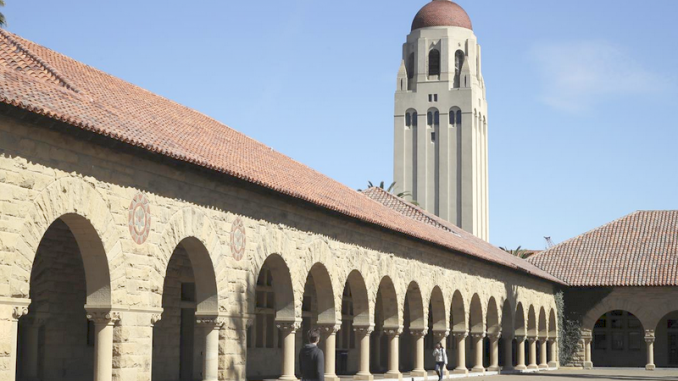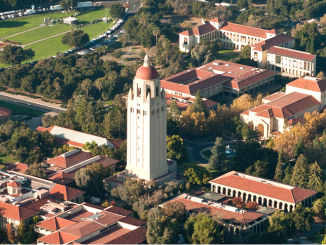
BY ALLISON LEVITSKY
Daily Post Staff Writer
Stanford leaders announced yesterday (April 15) that they have offered the Palo Alto school district $138.4 million — or about $3.46 million per year for the next 40 years — to pay for the cost of educating the hundreds of K-12 students that the university’s 3.5 million-square-foot expansion will bring to the district.
The school board will discuss the proposed agreement tonight (April 16) at 7 and vote on it next week.
The proposed agreement doesn’t include an immediate promise of a new school site to serve the north side of campus, which the school district has been demanding and Stanford has been refusing.
That means that the 275 students expected to enroll by 2023 would go to existing district schools. The elementary schoolers would all go to the two schools at Stanford: Escondido, which has 537 students, and Nixon, which has 446. Five hundred new students are expected after 2029.
Stanford is offering to pay up to $1 million toward facility expansion or materials costs to help accommodate those students.
In 2032, three years before the end of the county permit, leaders from Stanford and the district would meet to discuss the “possibility” of a school site in Palo Alto along Sand Hill Road, including the land currently occupied by the Oak Creek Apartments at 1600 Sand Hill.
That land returns to Stanford’s control in 2048. The development would bring 9,610 new students and employees to campus.
Stanford is also offering up to $15 million to build and furnish an “innovative space” on school district property where students and faculty from Stanford and the school district can “expand their collaboration.”
$5,800 a student
And for each student who lives in the new, property tax-exempt housing at Stanford, the university would start out by contributing $5,800 a year.
That number would ramp up 2% a year to cover inflation for the first 20 years.
During the second half of the 40-year agreement, the amount would decrease by 2% per year for a total 40-year amount of $121.9 million, or an average of $3.05 million a year.
The $5,800 amount is a fraction of what the district spends per student, which is closer to $19,000 or $20,000.
But because there are fixed costs involved in running the district, it doesn’t necessarily cost $20,000 per year to add a new student. The district gets funds from a number of sources, school board President Jennifer DiBrienza pointed out.
“Each added student doesn’t cost us that much,” DiBrienza said. “This seemed like a great potential agreement.”
First-year trustee Shounak Dharap said the $5,800 number amounted to a “great floor” for funding. He said the district may be able to negotiate for more per-pupil funding the next time Stanford wants to expand, which could be in 20 years or so.
“Like any agreement, it’s a give and take,” Dharap said.
Stanford is also offering $500,000 to make streets safer for kids to walk and bike to school.
And representatives from both sides would meet annually to discuss the agreement, collaboration opportunities and the timing and location of new housing affecting district enrollment.
How the negotiations worked
To work out the proposed agreement, officials from both sides, including Superintendent Don Austin, met over a two-day period with a facilitator. School board members weren’t included on the negotiating team.
“The conditional agreement should serve as a model of what is possible when groups take the time to understand each other and commit to finding mutually agreeable resolutions,” Austin said in a statement. “Beyond the finances of the proposed agreement, PAUSD is excited about the possibility of partnering with Stanford in ways that will benefit all students.”
Stanford President Marc Tessier-Lavigne agreed.
“Stanford and PAUSD share a deep history of partnership in pursuit of providing an excellent education for out students. Many of our prior interactions have occurred in an organic fashion,” Tessier-Lavigne said in a statement. “This agreement makes our engagement more systematic and organized, helping increase its impact for the benefit of students.”
Stanford continues to negotiate a closed-door development agreement with Santa Clara County supervisors, but those mitigations are likely to focus on housing and traffic.




As a property tax payer, I wish Stanford were contributing more than just $5,800 a student. I think the school board should reject this agreement and demand more. It’s important to remember that Stanford’s property is largely tax exempt, which deprives the school district of money that would otherwise come from the university’s growth. Hold out for a better deal!